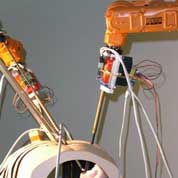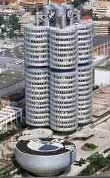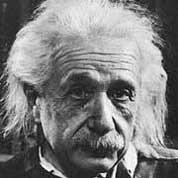 |
 |
 |
 |
 |
 |
 |
 |
|
Scroll down for more info on TUM and Munich
|
|
|
The positions are filled - thanks again for the numerous applications!
Due to limited funding we had to reject several great candidates, but we hope
we'll be able to announce new positions soon!
Jürgen Schmidhuber, 2006.
|
|
More jobs
at IDSIA
|
 |
Position at TU Munich:
Sequence Learning
(1-3 years / wiss. Mitarbeiter BAT IIa or BAT 1b)
|
|

|
|
Location: The robot lab at
TUM is a great place for adaptive robotics,
with state-of- the-art facilities, several
unique and expensive robots (25 by last count, not counting the small ones),
many connections to other leading robotics institutes,
and strong interaction with machine learning
researchers at
IDSIA (Switzerland).
Start: 1 Dec 2006 or later.
Salary according to the official
BAT IIa or BAT 1b scale.
There is travel funding available in case of papers accepted at important
conferences. Occasional participation in teaching / tutoring
is expected.
Knowledge of German would be a plus,
but is not mandatory.
|
|
|
Prof. Schmidhuber (of
TUM
and
IDSIA)
is seeking
an outstanding postdoc (or possibly PhD students) interested in
Sequence Learning,
in particular,
statistical models such as Hidden Markov Models,
Recurrent Neural Networks,
Evolino,
and Support Vector Machines.
We anticipate that the work will
be funded through a project on Tactile Sensing.
The project also involves neurobiologists and hardware experts building
artificial haptic devices. Our goal is to process and analyze
sequential data obtained by other teams in the project consortium,
in particular, data from artificial fingers with haptic sensors, and from
neurophysiological measurements. Possible subgoals are: to improve existing
sequence learning algorithms, to recognize objects
by touching them, improving the artificial fingers etc.
The job will involve some interaction with experts in
the UK, Sweden, and Switzerland.
Applicants should submit as soon as possible:
(i) Curriculum vitae, (ii) List
of three references and their email addresses, (iii)
Brief statement on how their research interests fit the topics
above.
|
|

|
Submit your application as plain text file (or pdf)
by email to juergen@ idsia.ch.
Do NOT send large files; instead send URLs.
In the subject header, please
mention your name and the keyword bat2006eu.
For example, if your name is Jo Mo, use
subject: Jo Mo bat2006eu.
|
|
|
Above:
robot hand of the Artesimit project.
More.
Left:
The first bots to tie knots!
More.
|
|
 |
|
TUM is a leader in the fields of automation and robotics.
The recent FOCUS and SPIEGEL surveys (2004) ranked TUM first among Germany's
universities, right ahead of Munich's LMU.
TUM CS has strong connections to
industry leaders such as Munich's
BMW
and
Siemens,
both headquartered in Munich.
Many foreign tech companies also have
their German headquarters here, such as GE and Microsoft.
|
|
|
14 Nobel laureates
(the most recent one of 2005)
are associated with Munich, 4 of them with TUM.
Not counting
Einstein
and others who just went to school here.
|
|

|
 |
|
Munich
is one of the world's most livable places
(ranked 2nd among the world's cities with over a million inhabitants, after Vienna, according to 2006 & 2005
surveys),
and gets consistently voted as Germany's most attractive city.
Lots of culture & fun, 100,000 students,
the world's largest festival
(Oktoberfest),
the world's oldest & largest
technical museum,
scenic Bavarian surroundings with lakes, rivers, hills, meadows,
bikepaths, castles, and beer gardens, close to major ski areas etc.
|
|
|
Schmidhuber has seen the world, and claims there is no
more beautiful region than the pre-alpine land between Munich and the Alps.
(He's biased though - he was born in Munich.)
|
|

|
 |
|
Why do a postdoc in Germany?
It is a fine place for scientists and inventors, with
a long tradition of
fundamental breakthroughs
that define today's world,
including Western
bookprint,
the calculator,
the binary system & calculus,
watches & other small machines,
math a la Gauss,
the second industrial revolution based on the
combustion engine &
the car
& the first practical dynamo & electric locomotion, the
germ theory
of disease,
the modern research university,
general relativity,
quantum physics,
population explosion,
the computer,
controlled
heavy flight, the helicopter, the jetplane,
uranium fission, missiles,
X-rays,
and innumerable others.
|
|
|
Until the mid 20th century Germany boasted
more Nobel prizes than any other nation.
And it is still a fine place for robotics:
the world's second largest producer and user of robots,
after Japan, and origin of the first
robot cars.
And it is the world's largest exporter.
|
|
. |































